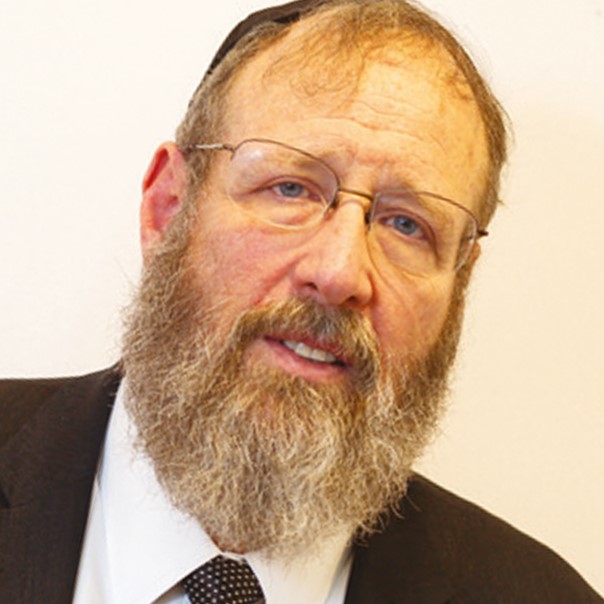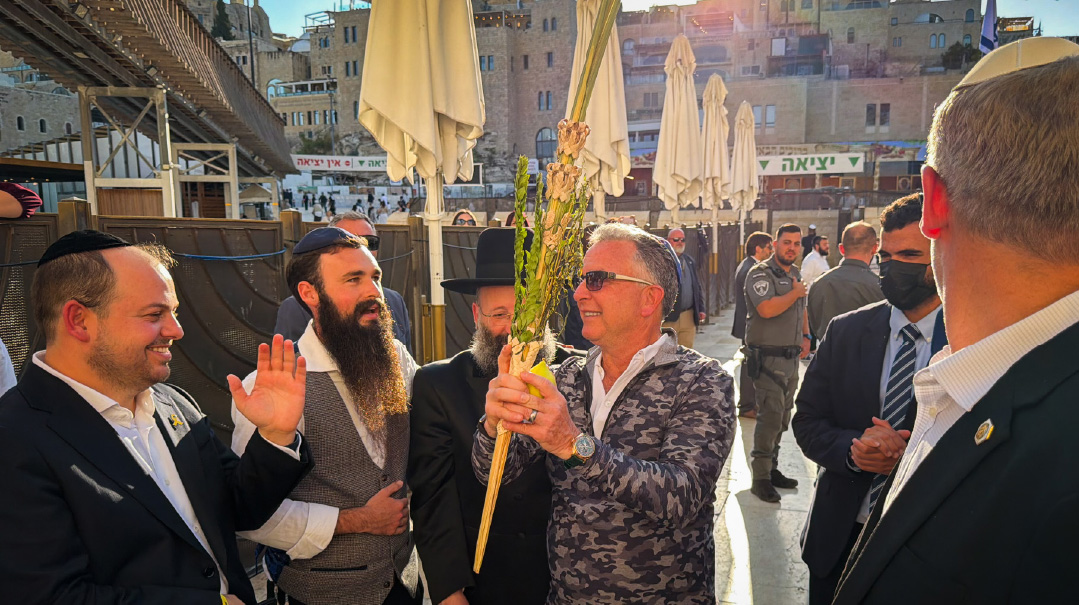Time to Return

For the sake of the integrity of our kehillos, it is imperative that we clearly define the absolute need for batei knesses
S
ometimes deprivation underscores so much more strongly the positive in what we have. Covid has brought many deprivations in its wake — some minor, some harsher — but it has helped us realize and appreciate what there is.
A communal issue that emerged during Covid was the closing of shuls and the proliferation of living room and backyard minyanim. Indeed, the people who created and maintained backyard minyanim for the last two years deserve a tremendous yasher koach. At a time of crisis and need, they rose to the challenge, expending a great deal of effort and expense, giving up their of privacy, and enduring many other inconveniences, in order to sustain tefillah b’tzibbur. Ashreichem and yiyasher kochachem!
But the initiative opened up a potential Pandora’s box. Firstly, there are some backyard minyanim that stubbornly remain, and don’t seem to have any intention of returning to a shul.
Even among many people who have returned to shul, there still remains the nagging doubt, “Maybe those backyards weren’t so bad?” For the sake of the integrity of our kehillos, it is imperative that we clearly define the absolute need for batei knesses.
The Korach Logic
These minyanim had and have many allures, including low overhead and convenience. But most alluring is that there is no rav. The justification for such an arrangement, which is often not actually stated but rather is implicit or even subconscious, is that in today’s generation, most people are well-educated enough in halachah to manage the details of proper davening. As far as a drashah or devar Torah is concerned, many feel they can do without it. Otherwise, congregants can take turns preparing and delivering a vort.
This is not a new sentiment. For example, when Korach was upset at Moshe for grabbing the kehunah for his brother, he disputed the entire institution of priesthood. “Why do we need holier Jews? Aren’t we all a mamleches kohanim? Isn’t the entire community holy? Didn’t we all hear Hashem at Sinai?”
Korach illustrated his point with a seeming absurdity: “Does a garment that is all techeiles need tzitzis? Does a house full of seforim need a mezuzah?” These are powerfully logical arguments. But they are manifestly wrong; for the halachah is that indeed the garment that is all techeiles does require tzitzis, and the room packed to the rafters with seforim does require a mezuzah.
But where is the logical flaw in Korach’s most cogent argument?
The flaw lies in his basic assumption: that ruchniyus has a finite and absolute definition. Once a person becomes a kadosh, he has reached his goal and the process is over.
But the true nature of kedushah is to become Divine-like. And since Hashem is infinite, the road to becoming kadosh is by definition infinite. It is a constant progression to the beyond.
Thus, the techeiles tzitzis fringe of a garment is an arrow pointing and trailing off to the beyond. So too, the mezuzah on the doorway is an arrow pointing to the beyond. No matter how blue the garment, no matter how many seforim in the room, true spirituality lies not within, but rather in the never-ending voyage to the beyond.
The Maharal in many places explains that placing spirituality into finite boundaries and concretizing it means perforce destroying it. Nothing spiritual is “this”; rather, it is always, “this and then.”
Indeed, Korach’s logic was flawless, but it was built on the falsest of premises. The premise is that spirituality is a fixed goal — something that can be contained and attained, as opposed to a perpetual process — something to constantly strive for.
The Power of Presence
This concept defines the first and most important function of a rav: presence — the presence of a man of stature. It is a communal statement to ourselves and to our children that here is the person who represents the road to further reaches, in regard to Torah knowledge, yiras Shamayim, and middos.
A reflection of this concept is seen in the halachah that in a beis haknesses, the elders are supposed to be seated facing the public, “so that the public faces both the holy ark and the elders” (Orach Chayim 150 based on a Tosefta). In other words, being part of a community means that a person is looking up toward both the Torah and the elders.
In previous generations, communities would traditionally choose rabbanim primarily for their stature. In the old days, the rav was not the one who spoke; a maggid usually did that. Even the day-to-day psakim were many times the province of a morah hora’ah.
For instance, in Brisk, neither Rav Chaim nor the Griz paskened day-to-day questions; Reb Simcha Zelig Reguer did. Major decisions were indeed the province of the rabbanim, but above all, it was their very presence that shaped and elevated the community.
Today, a rav often does speak and pasken and provide general guidance, but his most important role continues to be his very presence.
The effect of this presence is reflected in halachah, which considers someone who is mechallel Shabbos in public to be in the category of a gentile in many regards. However, many poskim state that if the offender was not mechallel Shabbos in front of an adam gadol, he is not considered a “mechallel Shabbos in public” (Orach Chayim 385, Mishnah Berurah 6). Thus, we see that the very presence of a choshuve person is a deterrent to wrongdoing.
Who Will Tell Us?
After presence, the second important element that a rav brings to a community is tochachah, rebuke. The Rambam states that one of the purposes of the bimah in shul is to serve as “the place to stand for the reader of the Torah, and for the person offering rebuke to the public” (Rambam, Tefillah 11:3).
This rebuke is not necessarily a fire-and-brimstone speech; it can be subtle and soft criticism. Furthermore, Mesillas Yesharim explains a mussar fundamental: that mussar is not meant for the purpose of imparting new information. Most of what mussar has to offer is already well known. However, even that which is well known needs to be constantly brought to people’s attention, as there is a tendency to repress the demands such information makes on us.
Over the course of the year, a rav reminds people again and again about decorum in shul, coming to shiurim, shalom bayis, chinuch habanim, giving tzedakah, and undertaking communal responsibility. Halachos are taught and repeated publicly.
The rav may be an outstanding and inspirational orator, or he may be far from it. But in all cases, there is a constant reminder of what’s right and what’s important. Ideally, communities shteig because of this; minimally a reasonable status quo is maintained, whereas communities with no mochiach tend to gradually deteriorate over time.
Some groups have eschewed a rav and instead substituted a rotation of congregants to say a devar Torah. Many times, this includes the silly, the cynical, and even the borderline heretical. After all, in a democracy, who is to say what should be said and what shouldn’t? And even if the devar Torah is most appropriate, it can never come across as a demand or rebuke. For the speaker’s role is that of a peer, not that of a leader or superior.
Living as a Community
There is another severe fault with the improvised minyanim and that is addressed in an open halachah:
“Wherever there dwell ten Jews, they must prepare a house wherein people will gather to pray; this place is known as a beis haknesses. The people of the town force each other to build a beis haknesses” (Rambam, Tefillah 11:1; also, Orach Chayim Ch. 150).
It is therefore clear that a shul must be a designated structure. I believe that this is in line with the halachah of having a makom kavua for our own tefillah (Rambam, Tefillah 5:6). “Ad hoc,” a word that describes “pop-up minyanim,” expresses something insignificant — but a shul, and each person’s own place of tefillah, require the gravitas of permanence and structure.
Finally, there is a more global issue with backyard minyanim, and that is the lack of a sense of communal responsibility among the shul members and within the broader community. In a shul, people look out for each other; the shul creates a sense of achrayus for others. This means that people must supply membership and building funds and maintenance funds. Mikvaos, eiruvim, and various tzedakos tend to center around the shul. If there is no shul, the sense of communal responsibility is materially diminished.
The community of Israel is called an eidah. One version of an eidah is the terrible eidah of Korach, as we explained.
But there is a second and most uplifting vision of an eidah. This is described in the words of Moshe Rabbeinu’s plea to Hashem: “May the L-rd of spirits appoint a leader for the eidah. He will be a person who will go out ahead of them and come in ahead of them. And he will lead them out, and bring them back in, so that the eidah of Hashem will be not like a flock of sheep without a shepherd” (Bamidbar 27:15).
Moshe’s final request for Israel was a leader. The first quality of leadership he cited was personal stature — that the leader be “ahead of them.” Then follows the quality of being able to “take Yisrael with him,” and lead them beyond.
B
aruch Hashem, we have by and large returned to our shuls. For that handful who haven’t, we say, “It is now time to fold up those chairs and tables, and ‘just as you receive great reward for acting, you will now receive great reward for desisting.’ By shutting down those backyard minyanim, you will thereby spearhead the drive to bring back adas Yisrael to its true form, with a leader who marches ahead of the tzibbur and whose very presence prompts us to follow along. You will lead the return of your mispallelim to a place worthy of being called a beis Hashem, which expresses the collective achrayus of the klal.”
This is an auspicious time for this to take place. It is in the year of “Hakhel,” when all of Israel gathers together as a kahal. And standing together as a kahal, may we merit to serve the Melech who exhorts and rebukes Klal Yisrael, once again, with the eternal words of Sefer Devarim.
(Originally featured in Mishpacha, Issue 931)
Oops! We could not locate your form.







